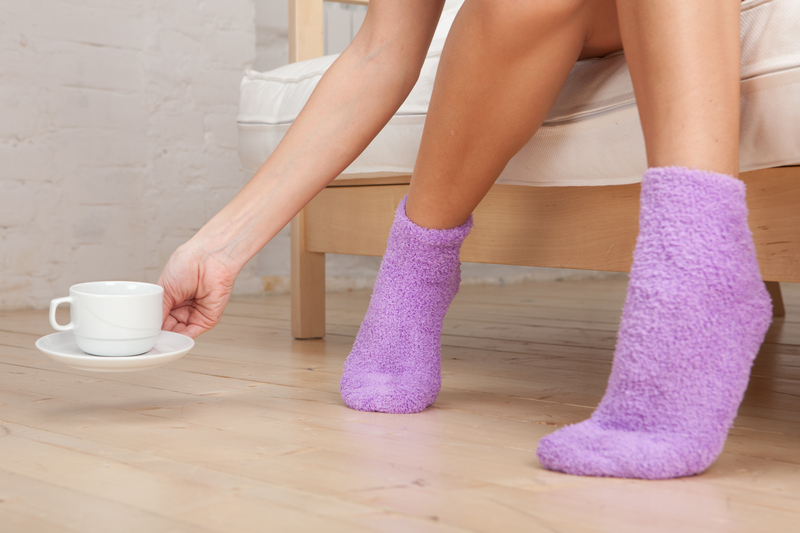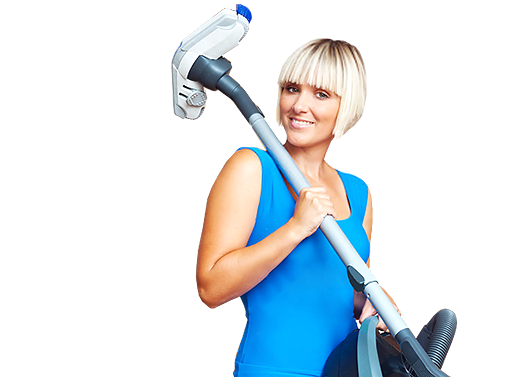How to Create an Allergy-Friendly, Dust-Free Home
Posted on 30/05/2025
How to Create an Allergy-Friendly, Dust-Free Home
Do you suffer from allergies at home or struggle to maintain a clean, dust-free environment? You're not alone. Many people find themselves sneezing, coughing, or dealing with worsened allergy symptoms due to common allergens and dust lurking inside their houses. The good news is that with intentional cleaning habits, material choices, and some lifestyle adjustments, you can transform your living space into an allergy-friendly, dust-free sanctuary. In this comprehensive guide, we'll walk you through actionable steps to significantly reduce dust and allergens for a healthier, happier home.
Understanding Allergens and Household Dust
Before we dive into allergy prevention tips and dust reduction techniques, it helps to understand what causes these issues. Most household allergens come from indoor and outdoor sources, including:
- Dust mites: Tiny creatures thriving in bedding, upholstered furniture, and carpets.
- Pet dander: Microscopic flecks of skin shed by pets such as cats and dogs.
- Mold spores: Fungi that grow in damp areas like bathrooms and basements.
- Pollen: Airborne particles from outside that enter through windows and doors.
- Indoor air pollution: Smoke, chemicals, and volatile organic compounds (VOCs) from products and activities indoors.
On the other hand, household dust is a complex combination of particles such as dead skin, hair, textile fibers, pollen, microorganisms, and more.

Tips for Building an Allergy-Friendly, Dust-Free Environment
To foster an allergy-safe home, focus on both reducing allergen sources and maximizing dust control. Here are vital steps you can take:
1. Choose Hypoallergenic Materials and Furniture
- Opt for bare floors. Use hardwood, tile, or linoleum instead of carpet, which traps dust and allergens.
- When possible, select leather, wood, or metal furniture instead of upholstered pieces, as these are easier to wipe down and do not harbor dust mites.
- If you prefer area rugs, choose small, washable rugs and clean them regularly.
2. Keep Clutter to a Minimum
- Clutter collects dust. Minimize knickknacks, unnecessary decorations, and piles of magazines or books.
- Store items in closed containers, and use shelving with doors or glass fronts for displays.
A minimalist approach not only looks cleaner but it makes cleaning easier and more efficient.
3. Cover and Protect Bedding Efficiently
- Use allergy-proof mattress and pillow encasements to block out dust mites and pet dander.
- Wash bedding weekly in hot water (≥ 130°F or 54°C) to kill dust mites and remove allergens.
- Choose synthetic fabrics instead of down, wool, or feathers, which are more likely to attract dust mites.
4. Maintain Proper Humidity Levels
- Keep indoor humidity between 30% - 50% with the help of a dehumidifier or air conditioner. Use a hygrometer to monitor levels.
- Too much moisture can encourage the growth of mold, dust mites, and bacteria. Fix leaks and wipe up spills promptly.
5. Up Your Cleaning Strategy
- Dust with a damp microfiber cloth. Dry dusting sends allergens back into the air. Microfiber grabs and holds dust better than regular fabrics.
- Vacuum at least twice per week, more often if you have allergies or pets. Use a HEPA filter vacuum to trap tiny particles.
- Pay extra attention to corners, baseboards, under furniture, and behind appliances – these spots are dust magnets!
- Wash or replace air filters in your HVAC system monthly or as recommended, and don't forget about filters in portable air purifiers and vacuums.
- Deep-clean curtains, upholstery, and other fabric surfaces regularly.
Pro Tip: If you have severe allergies, consider wearing a mask and gloves while cleaning or ask someone else in the household to clean.
6. Minimize Pet Allergens
- Bathe and groom pets frequently. Wipe their paws and fur when they come in from outside to minimize the transfer of pollen and dirt.
- Establish pet-free zones, especially in the bedroom and on furniture you use most often.
- Wash pet bedding and toys in hot water weekly.
7. Control Mold and Moisture
- Ventilate humid spaces, use exhaust fans in bathrooms and kitchens, and avoid leaving wet laundry or towels lying around.
- Promptly repair leaks in the roof, plumbing, or basement.
- Use mold-resistant paint and cleaning agents in known risk areas.
8. Purify Indoor Air
- Invest in HEPA air purifiers for bedrooms and main living areas. They capture allergens and dust particles from the air.
- Avoid smoking indoors and keep indoor plants (which can harbor mold or pollen) to a minimum if allergies are severe.
- Open windows only during low pollen seasons or after a rainstorm to let in fresh air without increasing allergens.
Room-by-Room Allergy & Dust Prevention
Now let's break down specific strategies for each part of the home to maximize your allergy control and dust prevention efforts.
Bedroom
- Keep it simple: Avoid excess pillows, stuffed animals, and thick drapes that can accumulate dust.
- Run an air purifier at night.
- Wash linens, blankets, and pillowcases weekly.
- Keep pets out and ensure closets are organized and closed.
Living Room
- Use blinds or washable shades instead of heavy fabric drapes. If you must use curtains, opt for those that can be machine washed frequently.
- Regularly vacuum furniture and use pillow covers designed to protect against allergens.
- If you have children, wash their toys often, especially plush toys.
Kitchen
- Store food in airtight containers to avoid attracting pests, which can trigger allergies.
- Clean surfaces daily and don't let dirty dishes sit out.
- Regularly check under sinks and behind appliances for leaks or mold.
Bathroom
- Run exhaust fans during and after showers to keep humidity low.
- Use mold-inhibiting sprays on tiles and shower curtains.
- Wash bath mats frequently.
Entryways & Hallways
- Take off shoes at the door to prevent outdoor allergens and dust from coming inside.
- Use washable entryway mats and clean them regularly.
- Wipe down high-touch surfaces, like doorknobs and light switches, to minimize allergen accumulation.
Extra Tips: Creating Long-Term Allergy Control
- Schedule regular deep cleanings, especially before and after allergy season or when expecting guests.
- Update and maintain HVAC systems, including ducts, which can circulate dust and allergens.
- When renovating, choose low-VOC paints and finishes, non-toxic building materials, and consider replacing carpets with hard surfaces.
- Work to keep pests away, as cockroach and mouse allergens can cause reactions. Seal cracks, fix leaks, and use natural deterrents.
- Educate the household on best practices for allergen avoidance and make allergy control a family priority.
Allergy-Friendly and Dust-Free Cleaning Checklist
To keep your home cleaner and safer every day, use this checklist for weekly and monthly tasks.
- Vacuum all floors and upholstery using a HEPA filter vacuum
- Dust surfaces with a damp microfiber cloth
- Wash bedding in hot water (weekly)
- Launder curtains and rugs as needed
- Check and replace HVAC and air purifier filters
- Clean and disinfect frequently touched surfaces
- Wipe down baseboards, windowsills, and door frames
- Declutter and reorganize problem areas monthly
Common Mistakes When Trying to Reduce Allergens and Dust
Despite your best intentions, some routines may be counterproductive. Be careful to avoid these common pitfalls:
- Dry dusting surfaces: This redistributes dust rather than removing it.
- Ignoring HVAC filters: Dirty filters spread allergens through your home.
- Allowing moisture to linger: This fosters mold growth and dust mites.
- Forgetting to deep clean carpets and rugs: These can harbor allergens deep inside fibers.
- Overloading rooms with fabric items: Excess pillows, layered curtains, and stuffed animals trap dust.
Recommended Products for an Allergy-Friendly, Dust-Free Home
Choosing the right products will make your cleaning routine more effective and enhance indoor air quality.
- HEPA vacuum cleaners for all surfaces
- Microfiber cleaning cloths and mops
- Allergen-proof mattress and pillow covers
- HEPA air purifiers
- Dehumidifiers for damp rooms
- Fragrance-free, non-toxic cleaning sprays
- VOCs-free and hypoallergenic paints

Frequently Asked Questions About Allergy-Friendly, Dust-Free Homes
What is the best way to remove dust mites from a home?
Use allergy-proof covers on all bedding, wash all linens in hot water weekly, and vacuum floors and upholstery frequently with a HEPA filter vacuum. Keep humidity low and eliminate as much carpet and upholstered furniture as possible.
How often should I replace air filters?
Check filters monthly and replace them at least every 1-3 months or as recommended by the manufacturer--especially during allergy season.
Are air purifiers worth it for allergy sufferers?
Yes, HEPA air purifiers help trap airborne allergens and dust. They are especially beneficial in bedrooms and living rooms.
Conclusion: Creating an Allergy-Friendly, Dust-Free Home is Possible
Transforming your environment into a dust-free, allergy-friendly home is a journey, but not an impossible one. By making strategic choices in materials, cleaning routines, and air quality management, you can drastically cut down on allergens and dust. Your health, comfort, and quality of life will all improve as you consistently apply these comprehensive steps.
Remember, the most allergy-friendly homes are those where prevention and consistency are top priorities. It's not about perfection, but about creating the healthiest living space possible for you and your loved ones.
Stay on top of these dust-reduction and allergen-control strategies, and your home will become the clean, safe haven you deserve.




